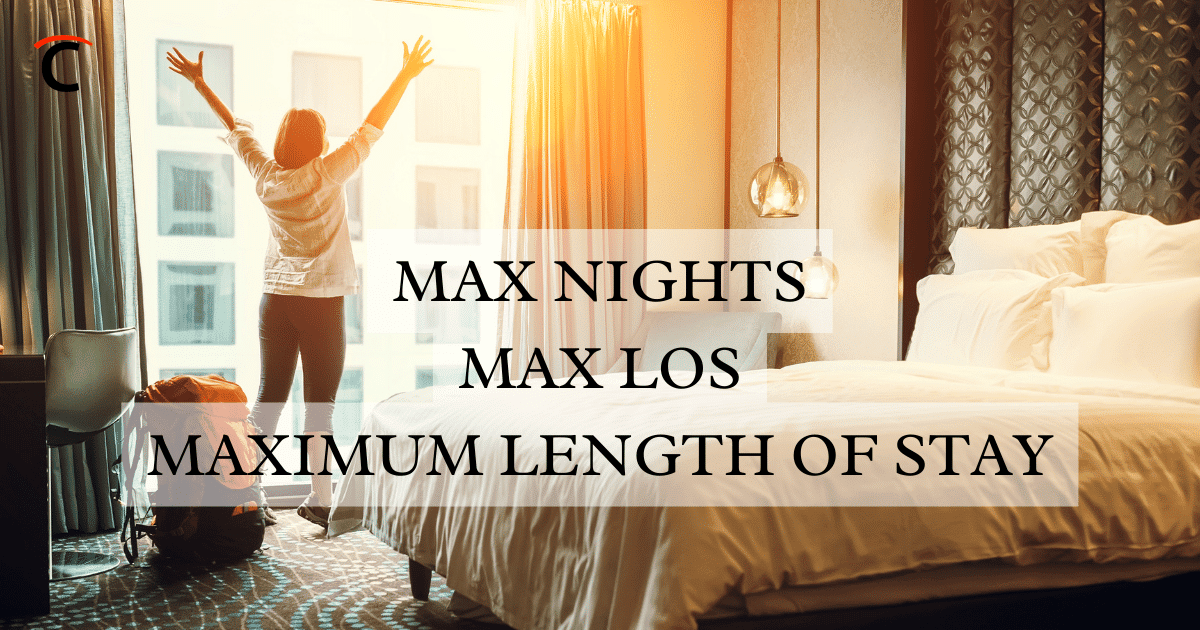Table of Contents
What does hotel max nights (aka max los, or maximum length of stay) mean?
TL;DR
Max LOS, also referred to as “maximum nights on arrival,” activates on the arrival date of the guest’s stay. For instance, let’s consider the 10th of the month has a Max LOS restriction of 3 nights.
If a guest searches for a stay from the 10th to the 14th, a 4-night stay, the booking option will not show as available because the search exceeds the maximum number of nights restriction.
However, if the guest looks for a stay from the 10th to the 13th, a 3-night stay, the booking will show as available since it adheres to the Max LOS restriction.
The Significance of Max LOS Restriction
In the ever-evolving domain of hospitality management, understanding and effectively implementing booking restrictions is pivotal to optimizing room occupancy and revenue. Among the array of booking restrictions, Maximum Length of Stay (Max LOS) holds a significant spot. This restriction ensures that a stay is bookable only if it is equal to or less than the stipulated maximum number of nights. Implementing this restriction smartly can aid in achieving a balanced room occupancy, ensuring a steady revenue stream, and enhancing guest satisfaction.
Optimized Room Turnover
By setting a Max LOS, hoteliers can optimize room turnover, especially during peak seasons or special events, ensuring a higher number of guests can be accommodated over a specific period.
Revenue Management
This restriction aids in revenue management by potentially maximizing revenue during high-demand periods. It also helps in setting dynamic pricing strategies based on the length of stay.
Enhanced Operational Efficiency
Predictable guest turnover allows for better operational planning, from housekeeping schedules to inventory management, leading to enhanced operational efficiency.
Flexibility in Booking
Max LOS provides a level of flexibility, enabling hotels to offer rooms for shorter stays, thereby attracting a broader spectrum of guests.
Implementing Max LOS Effectively
Analyzing Demand
Understanding the demand is the first step. Analyzing historical booking data, understanding peak and off-peak periods, and evaluating the average length of stay can provide valuable insights.
Dynamic Restrictions
Implementing dynamic Max LOS restrictions based on real-time demand and other market factors can be a game-changer. This requires a robust Property Management System (PMS) or a Channel Manager with dynamic pricing capabilities.
Clear Communication
It’s crucial to communicate the Max LOS restrictions clearly on the booking platform to avoid guest dissatisfaction. Ensuring that the terms and conditions are easily accessible and understandable will enhance the guest booking experience.
Monitoring and Adjusting
Regular monitoring and adjusting of the Max LOS restrictions based on current data and market conditions is crucial for maintaining optimal occupancy and revenue.
Utilizing Technology
Employing sophisticated technology like a channel manager or a PMS with analytic capabilities can automate much of the process, making it easier to manage and adjust Max LOS restrictions efficiently.
Final Thoughts
The Maximum Length of Stay restriction is a powerful tool in the arsenal of a hotelier aiming for optimized room occupancy and revenue management.
When employed judiciously and managed effectively with the help of modern technological tools, it can significantly contribute to a hotel’s success. It’s about striking the right balance – ensuring rooms are optimally occupied while providing guests with flexible booking options.
In a competitive market, understanding and leveraging booking restrictions like Max LOS could very well be the differentiator that propels a hotel to higher profitability.

